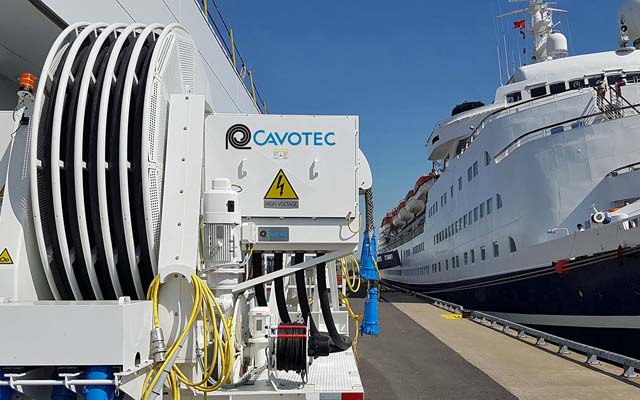Ferry industry organisation Interferry is calling on governments and electricity utilities to use carbon tax revenues to prioritise investment in Onshore Power Supply (OPS) development to help the ferry sector maintain its lead in maritime electrification and hybridisation.
A recent study conducted on Interferry’s behalf by Oxford Economics revealed the ferry industry’s huge economic impact and size, with an annual throughput of some 4.3bn passengers and 373m vehicles. The duration of most ferry crossings is between 30 minutes and two hours, making ferries the ship type par excellence to use battery technology.
Interferry CEO Mike Corrigan said: “Due to the nature of the ferry business, with a myriad of short to medium-long routes, operators around the world are already leading shipping’s charge towards electrification and hybridisation. However, to meet the IMO’s ambitious decarbonisation targets, more landside power supply is urgently needed. Interferry therefore urges governments and electricity utilities to aggressively invest in the development of OPS infrastructure that will allow ferries to plug in and charge their onboard batteries. Many governments have implemented or will be implementing a carbon tax, so Interferry is urging for some of these tax revenues to be allocated to ports and terminals for electrification purposes.”
Corrigan stresses that, by using shore-powered onboard batteries instead of fossil fuels to sail between ports, the environmental footprint of ferries will be greatly reduced. Operating battery-electric ferries also means that the ferry industry does not have to tap into the limited resources of alternative fuels. But Corrigan warns that governments need to play a pivotal role in supporting electrification of the world’s ferry fleet.
As long as sufficient OPS is missing at the ports and terminals, domestic and international operators alike remain in limbo with regard to ordering new full-electric or hybrid ships. Interferry member Stena Line, for instance, has designed a future large ro-pax vessel powered solely by electricity. However, this ambitious project stands or falls by the availability of OPS infrastructure.
Stena Line CEO Niclas Mårtensson said: “Electrical charging infrastructure is critical for us to advance the project. Therefore, we continue our dialogue with authorities and other external stakeholders hoping to move this project ahead.”
The lack of OPS facilities is a major concern not only for operators of large ro-pax ferries but also for the many operators of small passenger craft in the wide cross section of Interferry members. The San Francisco Bay Area Water Emergency Transportation Authority (WETA) operates 17 high-speed passenger-only ferries and is preparing to operate the country’s first fleet of battery-electric ferries, but the lack of OPS facilities has proved to be a major limitation.
WETA Executive Director Seamus Murphy said: “We have secured the funding necessary to build our first five zero-emission ferries, but we won’t be able to operate those vessels without a significant amount of new shore power. Decarbonising the maritime industry is crucial to achieving our collective climate goals, but to make that happen, we need to focus on delivering more power to our waterfront and it needs to happen quickly.”
In an exception to the rule, Norway has demonstrated that, with a long-term decarbonisation strategy and investment plan, it is perfectly feasible to provide OPS capacity where it is required.
Heidi Wolden, CEO Norway’s Norled said: “Operating zero-emission ferries is now a prerequisite to obtaining a route concession from the Public Transportation Authorities. But electrification of Norway’s domestic ferry fleet is a shared responsibility, with the government financing OPS infrastructure and creating tough competition between ferry companies for zero-emission solutions during the tendering process. Due to politics and backing from government, Norway’s ferry operators are global leaders in maritime decarbonisation.”
Corrigan concluded: “To ensure that ferries across the world can continue to provide essential lifeline services, they must be able to meet national and global GHG reduction targets taking effect as early as 2030. It is therefore imperative that the mass rollout of OPS facilities is urgently undertaken. The implementation of carbon-based taxes by many governments – such as the recently introduced EU ETS – offers the logical solution we are calling for. Allocating money from these carbon funds can provide the OPS infrastructure that ferry operators need.”
Image: Onshore power supply (credit: Cavotec)



